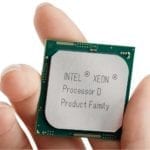Network computing infrastructure has been expanding for decades, and the network edge is no exception. When it comes to the expanding network edge, density is key; that’s why Intel’s Xeon D SoC processors have been steadily gaining favor. Servers, hot storage(instant access data- ie profile images) and network appliances(firewalls, access points) are being given more demanding tasks as companies push more content to the network edge. Xeon D-15xx where purpose built for tackling these compute-heavy tasks with powerful Broadwell-EP cores with a 35-45W TDP (much more comparable to Atom’ c2000’s 32W TDP).
Network appliances evolve

In a world where OPEX (and to a lesser extent, CAPEX) drive technological progress, finding the best tool for the job is essential. Giants like Intel saw this and over the years developed their most extensive range of chips yet; from the favorite server workhorse, e5-2600 v3/v4, to the tiny button-sized SoC’s designed for the IoT. as workloads like web hosting and firewalls are being pushed to the edge of networks, Performance:watt starts to take over and more scale-able processors need to be used. How do you accomplish that? Take the ARM route and integrate as many components as you can as close as possible. In Xeon-D’s case its on the same CPU package, not entirely SoC(System on a chip) its instead 2 dies – 1 for the processors and memory, 1 for the I/O and legacy interfaces, all this connected and packaged into 1 tiny cpu.
Comparing power efficient processors: Atom vs Xeon-D
Although Atom processors still offer the lowest TDP out of Intel’s server-class chips, Xeon-D has set the new standard for performance:watt and shows its superiority for mid-range network processing applications. The above chart shows how the most powerful processors from both processor families compare, and Xeon-D is at least 3.9x faster in every category- barring TDP, where atom operates at a lower 35W compared to xeon-D’s 45-65W.
Xeon-D Use Cases
Intel targeted specific use cases with the Xeon D, by specializing its SKU’s for different workloads like storage computing and network computing. Above is an example of a network/communications centric applicant built upon the XEON D-15×8 SKU.
Xeon-D SKU’s and their uses:
Xeon D-15×0 Web hosting, Cloud hosting
Xeon D-15×1: Network storage
Xeon D-15×8 & Xeon D-15×7: Networking/Communications accelerated
Xeon D-15×0 where the first batch of processors to come out with the new 14nm process, they targeted the hyperscale microserver market, where companies like facebook and google require the best performance:watt they can get.It also does well to fill in the gaps between the XEON e5 and e3 lines, where an e3 might not have all the featrues you need and an e5 is overkill/power-hungry.
Xeon D-15×1 target the midrange NAS(Network accessible storage) market where it’s all about I/O speed. Made for applications like hot cloud storage, where websites like facebook and google need to make certain images readily available at all times.
Xeon x-15×8 Networking focused processors offer incredible value by integrating I/O, 2x10gbE controllers and 8-16 Broadwell-EP cores all in a single low TDP package. They’ve also integrated Intel’s Virtualization technology Vt-D, expanded RAS(Reliability, Availability & Serviceability) and improved their on board encryption/decryption accelerators.
Lanner’s NCA-4010 XEON D-1518/1548 network computing appliance
SDN & NFV: Thanks to the integrated hardware assisted virtualization, these low-power chips can easily find a place within emerging 5g small cell deployments. This is also the case for Switching and routing, where software-defined networking makes extensive use of virtualization.
Firewall/UTM: With packet filtering and stateful firewalls starting to show their age, next-generation deep-packet inspection network appliances require all the power they can get. The hardware accelerated crypto, integrated 2x10GE and high core-count all go a long ways towards rock-solid performance and low-power usage.
Gateway/Access point: With modern advanced gateways and access points requiring adequate crypto, speed, capacity, reliability and efficiency, Xeon-D SoC’s offer one of the best values in this mid-range enterprise use case.